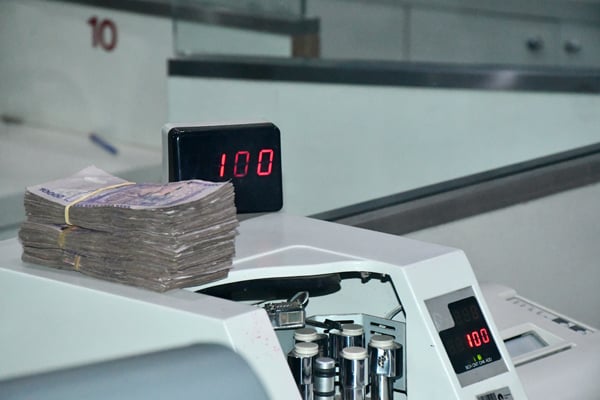Cost of printing money reduces to Shs147.5b

The Central Bank spends an average of Shs150b annually to print money and issue currencies. Photo | Edgar R Batte
What you need to know:
- According to the Bank of Uganda 2020/21 annual report, Shs147.5b was spent on printing currency. However, this was a reduction from Shs193b that was spent for the period ended June 2020.
The Central Bank spent Shs147.5b on printing money during the year ended June, according to the Bank of Uganda 2021 annual report.
However, the report noted, this was a reduction by at least Shs45.5b from the Shs193b that was spent during the same period ended June 2020.
The reduction, the Central Bank said, was partly due to a general decline in demand for money, improvement in processing re-issue banknotes and adaptation of new currency guidelines, in which the Central Bank is now required to reissue 80 per cent of currency compared to 20 per cent new banknotes.
During the period, the report noted, Bank of Uganda issued 75 per cent (reissued currency) and 25 per cent (new), which it said, was reasonable and within the targeted 80 - 20 per cent.
Previously, the Central Bank had been reissuing 70 per cent of currency compared to 30 per cent of new banknotes.
In the report released last week, Bank of Uganda indicated that the actual cost of printing money reduced by 23.58 per cent from Shs193b in the period ended June 2020 to Shs147.5b.
In 2018, President Museveni, while witnessing a memorandum of understanding between government and a German company, Veridos Identity Solutions Group, said it would be important to explore the possibility of printing money locally to save the country billions of money spent on currency printing abroad.
However, the proposal was rejected by Bank of Uganda governor Emmanuel Tumusiime Mutebile, citing an increase in counterfeits and cost.
While appearing before the Parliament Finance Committee recently, Dr Adam Mugume, the Bank of Uganda director for research, told MPs that Uganda could not afford to print its own currency because the “process is sophisticated and therefore contracting a local company would be overly expensive”.
“Setting up a factory to print money internationally is cost effective because they print other currencies. But if we set up a factory here the cost of printing one note will be very expensive because you are looking at only your own notes,” he said.
Dr Mugume also recently said that it was important that the drive to increase digital transactions is hastened to save government money that is spent on printing banknotes and coins annually.
At least 73 per cent of transactions in Uganda are conducted using cash even as there has been indications of rapid growth in digital based payments.
During the period, according to the report signed by Bank of Uganda Governor Emmanuel Tumusiime Mutebile, the value of currency in circulation grew by Shs320.58b or 5.62 per cent from Shs5.71 trillion for the year ended June 2020 to 6.03 trillion.
However, the growth was lower than the 24.13 per cent registered during the period between June 2019 and June 2020.
During the period, according to the report, money that was withdrawn through commercial banks fell by 5.83 per cent from Shs9.34 trillion for the year ended June 2020 to Shs8.8 trillion.
However deposits grew slightly by Shs243b from Shs8.24 trillion to Shs8.48 trillion.
Printing and currency re-issuance
Bank of Uganda, which holds the sole right of issuing banknotes and coins, prints and sometimes reissues currency. However, the in the case of the reissued banknotes, the Central Bank must ensure such notes are capable of being mechanically handled by cash receiving and or dispensing machines.
The Central Bank must also ensure that the quality of used banknotes is acceptable to members of the public, failure of which such notes including mutilated banknotes, are withdrawn and reimbursed.




